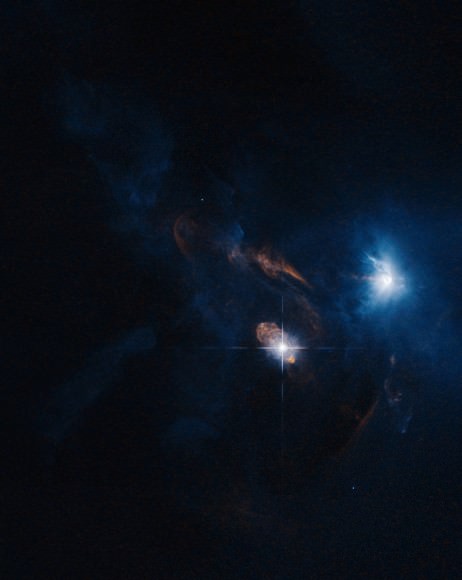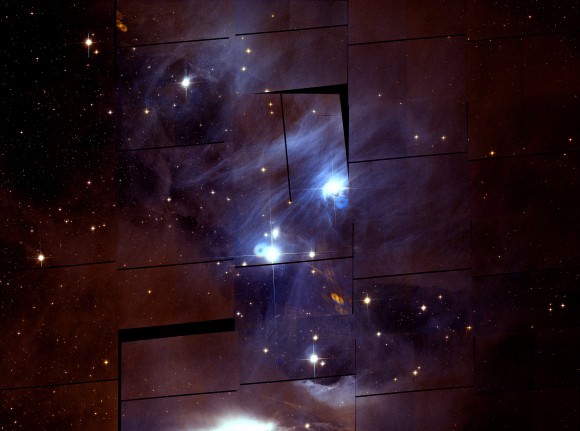Earth Watch Report – Sunday August 26th, 2012
August 26, 2012 by desertrose
Solar Activity
3MIN News August 25. 2012
Published on Aug 25, 2012 by Suspicious0bservers
Spaceweather: http://spaceweather.com/[Look on the left at the X-ray Flux and Solar Wind Speed/Density]
HAARP: http://www.haarp.alaska.edu/haarp/data.html[Click online data, and have a little fun]
SDO: http://sdo.gsfc.nasa.gov/data/[Place to find Solar Images and Videos - as seen from earth]
SOHO: http://sohodata.nascom.nasa.gov/cgi-bin/soho_movie_theater[SOHO; Lasco and EIT - as seen from earth]
Stereo: http://stereo.gsfc.nasa.gov/cgi-bin/images[Stereo; Cor, EUVI, HI - as seen from the side]
SunAEON:http://www.sunaeon.com/#/solarsystem/[Just click it... trust me]
SOLARIMG: http://solarimg.org/artis/[All purpose data viewing site]
iSWA: http://iswa.gsfc.nasa.gov/iswa/iSWA.html[Free Application; for advanced sun watchers]
NASA ENLIL SPIRAL: http://iswa.gsfc.nasa.gov:8080/IswaSystemWebApp/iSWACygnetStreamer?timestamp=…
NOAA ENLIL SPIRAL: http://www.swpc.noaa.gov/wsa-enlil/
NOAA Bouys: http://www.ndbc.noaa.gov/
RSOE: http://hisz.rsoe.hu/alertmap/index2.php[That cool alert map I use]
JAPAN Radiation Map: http://jciv.iidj.net/map/
LISS: http://earthquake.usgs.gov/monitoring/operations/heliplots_gsn.php
Gamma Ray Bursts: http://grb.sonoma.edu/[Really? You can't figure out what this one is for?]
BARTOL Cosmic Rays: http://neutronm.bartol.udel.edu//spaceweather/welcome.html[Top left box, look for BIG blue circles]
TORCON: http://www.weather.com/news/tornado-torcon-index[Tornado Forecast for the day]
GOES Weather: http://rsd.gsfc.nasa.gov/goes/[Clouds over America]
EL DORADO WORLD WEATHER MAP: http://www.eldoradocountyweather.com/satellite/ssec/world/world-composite-ir-…
PRESSURE MAP: http://www.woweather.com/cgi-bin/expertcharts?LANG=us&MENU=0000000000&…
HURRICANE TRACKER: http://www.weather.com/weather/hurricanecentral/tracker
INTELLICAST: http://www.intellicast.com/[Weather site used by many youtubers]
NASA News: http://science.nasa.gov/science-news/science-at-nasa/
PHYSORG: http://phys.org/[GREAT News Site!]
Space
Earth approaching objects (objects that are known in the next 30 days) |
|||||||||
| Object Name | Apporach Date | Left | AU Distance | LD Distance | Estimated Diameter* | Relative Velocity | |||
| (2009 AV) | 26th August 2012 | 0 day(s) | 0.1615 | 62.8 | 670 m – 1.5 km | 22.51 km/s | 81036 km/h | ||
| 331769 (2003 BQ35) | 28th August 2012 | 2 day(s) | 0.1585 | 61.7 | 240 m – 530 m | 4.64 km/s | 16704 km/h | ||
| (2010 SC) | 28th August 2012 | 2 day(s) | 0.1679 | 65.3 | 16 m – 36 m | 9.56 km/s | 34416 km/h | ||
| 4769 Castalia | 28th August 2012 | 2 day(s) | 0.1135 | 44.2 | 1.4 km | 12.06 km/s | 43416 km/h | ||
| (2012 LU7) | 02nd September 2012 | 7 day(s) | 0.1200 | 46.7 | 440 m – 990 m | 8.16 km/s | 29376 km/h | ||
| (2012 FS35) | 02nd September 2012 | 7 day(s) | 0.1545 | 60.1 | 2.3 m – 5.2 m | 2.87 km/s | 10332 km/h | ||
| (2012 HG31) | 03rd September 2012 | 8 day(s) | 0.0716 | 27.9 | 440 m – 990 m | 10.33 km/s | 37188 km/h | ||
| (2012 PX) | 04th September 2012 | 9 day(s) | 0.0452 | 17.6 | 61 m – 140 m | 9.94 km/s | 35784 km/h | ||
| (2012 EH5) | 05th September 2012 | 10 day(s) | 0.1613 | 62.8 | 38 m – 84 m | 9.75 km/s | 35100 km/h | ||
| (2011 EO11) | 05th September 2012 | 10 day(s) | 0.1034 | 40.2 | 9.0 m – 20 m | 8.81 km/s | 31716 km/h | ||
| (2007 PS25) | 06th September 2012 | 11 day(s) | 0.0497 | 19.3 | 23 m – 52 m | 8.50 km/s | 30600 km/h | ||
| 329520 (2002 SV) | 08th September 2012 | 13 day(s) | 0.1076 | 41.9 | 300 m – 670 m | 9.17 km/s | 33012 km/h | ||
| (2011 ES4) | 10th September 2012 | 15 day(s) | 0.1792 | 69.8 | 20 m – 44 m | 12.96 km/s | 46656 km/h | ||
| (2008 CO) | 11th September 2012 | 16 day(s) | 0.1847 | 71.9 | 74 m – 160 m | 4.10 km/s | 14760 km/h | ||
| (2007 PB8) | 14th September 2012 | 19 day(s) | 0.1682 | 65.5 | 150 m – 340 m | 14.51 km/s | 52236 km/h | ||
| 226514 (2003 UX34) | 14th September 2012 | 19 day(s) | 0.1882 | 73.2 | 260 m – 590 m | 25.74 km/s | 92664 km/h | ||
| (1998 QC1) | 14th September 2012 | 19 day(s) | 0.1642 | 63.9 | 310 m – 700 m | 17.11 km/s | 61596 km/h | ||
| (2002 EM6) | 15th September 2012 | 20 day(s) | 0.1833 | 71.3 | 270 m – 590 m | 18.56 km/s | 66816 km/h | ||
| (2002 RP137) | 16th September 2012 | 21 day(s) | 0.1624 | 63.2 | 67 m – 150 m | 7.31 km/s | 26316 km/h | ||
| (2009 RX4) | 16th September 2012 | 21 day(s) | 0.1701 | 66.2 | 15 m – 35 m | 8.35 km/s | 30060 km/h | ||
| (2005 UC) | 17th September 2012 | 22 day(s) | 0.1992 | 77.5 | 280 m – 640 m | 7.55 km/s | 27180 km/h | ||
| (2012 FC71) | 18th September 2012 | 23 day(s) | 0.1074 | 41.8 | 24 m – 53 m | 3.51 km/s | 12636 km/h | ||
| (1998 FF14) | 19th September 2012 | 24 day(s) | 0.0928 | 36.1 | 210 m – 480 m | 21.40 km/s | 77040 km/h | ||
| 331990 (2005 FD) | 19th September 2012 | 24 day(s) | 0.1914 | 74.5 | 320 m – 710 m | 15.92 km/s | 57312 km/h | ||
| (2009 SH2) | 24th September 2012 | 29 day(s) | 0.1462 | 56.9 | 28 m – 62 m | 7.52 km/s | 27072 km/h | ||
|
|||||||||
……………………………………
Hubble’s Hidden Treasures Unveiled
by John Williams
A quick check of Hubble’s gallery shows just 1,300 images; however more than raw 700,000 images reside in a vast archive with hundreds of potentially jaw-dropping astronomical scenes just waiting to be uncovered. That was the idea behind the European Space Agency’s international contest called Hubble’s Hidden Treasures. And now with the hard work of amateur astronomers and more than 3,000 submissions, some of Hubble’s incredible celestial treasures are revealed.
“The response was impressive, with almost 3000 submissions,” the ESA said in a press release. “More than a thousand of these images were fully processed: a difficult and time-consuming task. We’ve already started featuring the best of these in our Hubble Picture of the Week series.”
The top 10 images selected in the Hubble Hidden Treasures basic imaging category. Top row: NGC 6300 by Brian Campbell, V* PV Cephei by Alexey Romashin, IRAS 14568-6304 by Luca Limatola, NGC 1579 by Kathlyn Smith, B 1608+656 by Adam Kill Bottom row: NGC 4490 by Kathy van Pelt, NGC 6153 by Ralf Schoofs, NGC 6153 by Matej Novak, NGC 7814 by Gavrila Alexandru, NGC 7026 by Linda Morgan-O’Connor
Credit: NASA & ESA
Judges ranked images from two categories, an image processing category and basic image searching category. Judges sifted through 1189 entries in the image processing category; a painstaking process of finding promising data and creating an attractive image using professional imaging software. But even if contestants didn’t have the technical know-how to create large mosaics and combine color filters, they could find stunning images in the Hubble archive using using simple online tools. The ESA received more than 1600 entries in this category.
“Every week, we search the archive for hidden treasures, process the scientific data into attractive images and publish them as the Hubble Picture of the Week,” says the ESA on their Hidden Treasures website. “But the archive is so vast that nobody really knows the full extent of what Hubble has observed.”
Josh Lake of the United States won with this awesome image of NGC 1763, part of the N11 star-forming region of the Large Magellanic Cloud.
First place in the processed category, which asked contestants to find promising data within the archive and process that scene into an attractive image, went to Josh Lake, from the United States. The image, which won the public vote, narrowly edged out other images. Lake produced a bold two-color image that is not in natural colors but contrasts light from glowing hydrogen and nitrogen. In natural colors, the two glowing gasses produce almost indistinguishable shades of red. Lake’s image separates them out into red and blue offering a dramatic view of the structure.
Messier 77 produced by Andre van der Hoeven, of the Netherlands came in a close second.
Andre van der Hoeven of the Netherlands came in a close second. The jury noted the impressive nature of Messier 77 in the image as well as the processing which combines several datasets from separate instruments to create the amazing image.
“This was my hardest job until now,” van der Hoeven says on the Flickr page. “Combining the different datasets to get equal colors was really hard. M77 was not fully covered by one dataset, so I had to combine channels of the WFPC2 with different wavelengths and tune the colors to get them to fit. But the result is in my opinion quite astonishing.”
We are as surprised as him that this image had not been released before.
Judy Schmidt of the United States entered this image of XZ Tauri, a new star lighting up a nearby cloud of gas and dust. She entered several images into the contest.
Third place went to an interesting image of XZ Tauri, a newborn star spraying gas into its surroundings as well as lighting up a nearby cloud of gas. The panel said it was a challenging dataset to process because Hubble captured only two colors in the region. “Nevertheless, the end result is an attractive image, and an unusual object that we would never have found without her help,” the panel said.
Revealing the challenge of many Hubble mosaics, the jury was impressed with the technical achievement Renaud Houdinet showed in putting together this ambitious view. He called this “The Great Mosaic Disaster in Chamaeleon. “Sometimes, things don’t turn out as they ought,” Houdinet admits on the Flickr description. Chamaeleon 1 is a large nebula near the south celestial pole and was not covered in one single Hubble image.
Robert Gendler took fifth place with an image of spiral galaxy Messier 96. You may know Gendler’s work as his version of Hubble’s image of NGC 3190 is the default image on the desktop of new Apple computers.
Top image caption: Top ten images selected in the Hubble Hidden Treasures image processing competition. Top row: NGC 1763 by Josh Lake, M 77 by Andre van der Hoeven, XZ Tauri by Judy Schmidt, Chamaeleon I by Renaud Houdinet, M 96 by Robert Gendler. Bottom row: SNR 0519-69 by Claude Cornen, PK 111-2.1 by Josh Barrington, NGC 1501 by kyokugaisha1, Abell 68 by Nick Rose, IC 10 by Nikolaus Sulzenauer. Credit: NASA & ESA
Links:
- Hubble’s Hidden Treasures
- Hidden Treasures image processing Flickr group
- Hidden Treasures basic imaging Flickr group
About the Author: John Williams is owner of TerraZoom, a Colorado-based web development shop specializing in web mapping and online image zooms. He also writes the award-winning blog, StarryCritters, an interactive site devoted to looking at images from NASA’s Great Observatories and other sources in a different way. A former contributing editor for Final Frontier, his work has appeared in the Planetary Society Blog, Air & Space Smithsonian, Astronomy, Earth, MX Developer’s Journal, The Kansas City Star and many other newspapers and magazines.








Comments